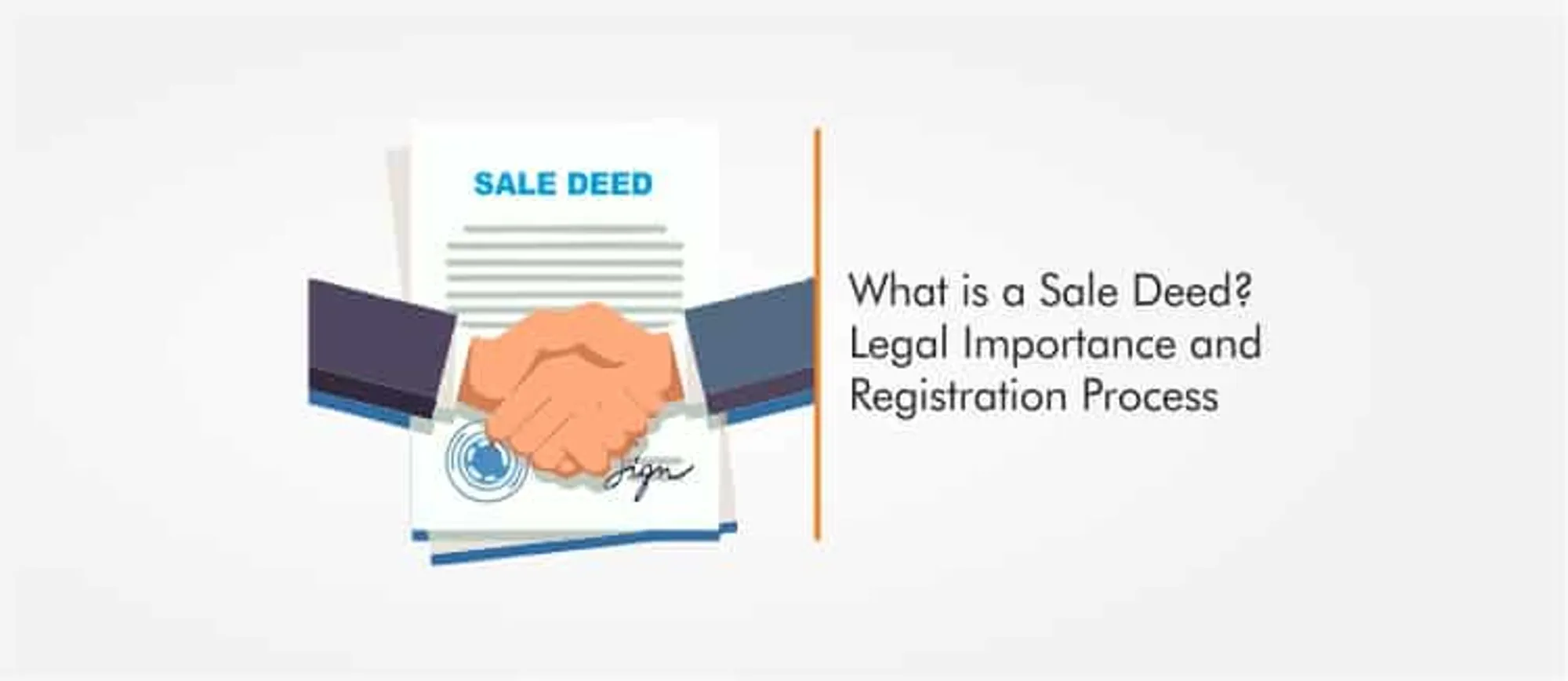A sale deed is one of the significant documents in property transactions
Table of Contents
What is a sale deed?
A sale deed is a legal document that describes the sale of a property between the parties (buyer and seller). It is proof of ownership. It transfers the rights in the property from the seller (transferor) to the buyer (transferee).
Following rights are transferred to the buyer:
- Right to sell
- Right to use
- Right to lease/mortgage
It is essentially a contract and therefore, all the legal requirements of formation of a contract must be fulfilled.
Also Read: How to cancel Illegal Registration of ancestral property
Legal Importance: Registered Sale deed is a legally binding document.
Proof of ownership:
Once the process of executing the sale deed is completed, the ownership in the property gets transferred to the buyer. The buyer gets absolute right over the property, and he gets the title of ownership.
Details of the parties and the property – help the investor and the parties
Sale deed contains the following elements:
- Name, father’s name/husband’s name and address of the parties
- Address of the property, area of the property –full description
- Payment of sale consideration-mode and time
- Delivery of Possession
- Encumbrances on the property –loan, mortgage etc.
- Compliance of Statutory requirements
- Statutory payments like utility charges, property tax etc.
- Clause of Penalty or compensation in case of default
- Date of execution of deed with registered deed number, serial number, book number, page number etc.
This information is helpful –
- It avoids ambiguity as the parties are clear about their obligations and rights
- It guides an investor before finalizing his decision to invest in the property in case of resale.
Resale –
A sale deed facilitates the resale of the property. It is a primary document conferring the title on the buyer. This title can be transferred by him further based on the deed.
Also Read: What benefits budget 2019 has for NRIs
Process of Registration:
As per the Registration Act 1908, the sale deed needs to be registered compulsorily.
- The deed is drafted and typed on a non-judicial stamp paper.
- The buyer has to purchase the stamp paper. Value of the stamp paper depends upon following:
- Value of the property – Sale consideration and Value of the property as per circle rate is compared. Amount of stamp duty is based on higher of the two.
- Stamp duty rate applicable is the rate prevalent in the State where the property is located.
- The sale deed has to be signed by both the parties on every page. The attestation by two witnesses is also required to complete the formation of the deed.
Also Read: What To Do If Your Property Possession Has Been Delayed?
Registration: – The sale deed is registered at the office of the sub-registrar having jurisdiction over the location of the property.
- The parties seek an appointment with the Sub Registrar’s office. There is provision for online appointment also.
- The parties need to be present physically at the office of the sub-registrar on the date of appointment. The seller presents the original documents. The Sub Registrar verifies the same.
- The parties can also mark presence through the power of attorney holder.
- The witnesses to the sale deed are also present.
- The photographs of the seller and the buyer, their thumb prints and signatures are put on the sale deed.
- All the parties must possess the ID proofs.
- The buyer pays registration fees
- Registered sale deed can be collected at the time given.
In few states, property registration is permitted online also. The parties appear before the authority for final signatures and registration of the document.

